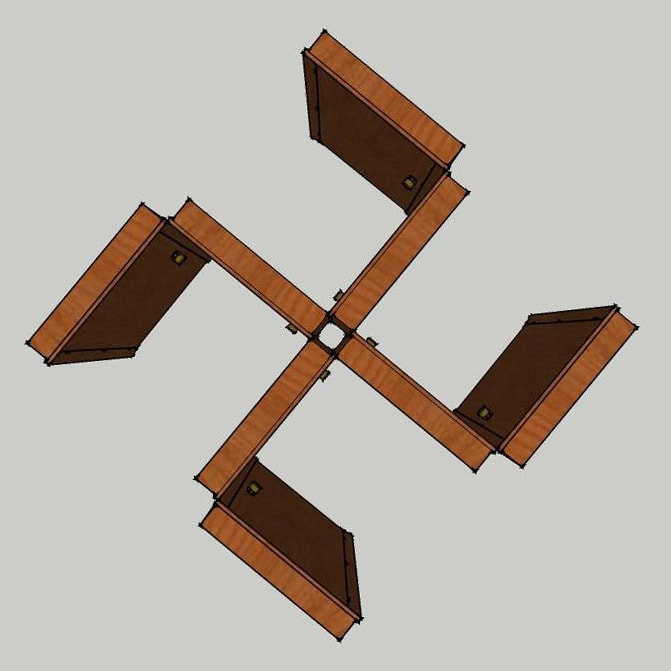The structure consists of eight doors arranged in the form of swastika. It represents a dangerous trap behind something which appears to be a harmless game.
“No Exit”, an interactive installation by Darija S. Radakovic, is facing a visitor with something seemingly ordinary. In front of him is a square space bound by doors which can be entered from any side. The space is actually a cube with built-in niches that looks the same from any direction. All you need to do is to enter any of these four niches and open the first door in front of you. Once inside, the visitor, which is now a participant and the subject of an experiment, has only two options: to go back the same way he entered, or to go further investigating this claustrophobic space; deeper in a trap. The walls are placed perpendicularly so while he’s opening the next door one exit closes and he feels more and more imprisoned in this miniature labyrinth. Wherever he goes, he’s in front of another door - behind those there is another door - finally he’s trapped just like a bug in a match-box.
But when that imaginary visitor-bug, by some miracle, by some miraculous chance he managed to soar for a moment in height above (particularly, in spirit), above himself, when he managed to look at his position from an astral perspective, he would have realized what it is that it’s all of the time so annoyed - that actually partition walls with a door formed arms of the swastika and that, while he marched trapped in the square space, on fact, all the time walking from one a close, claustrophobic swastika sector to another.
The visitor would then, not without anxiety, saw that every space is a trap, which can be converted into the center of terror; what in one point seemed like an ordinary door to the room, suddenly became a distant echo of the torture rooms and gas chambers. Linear movement becomes circular - the visitor is going in circles inside swastika. A broken square becomes a circle; eight-sided doors become a trap without escape.
Once freed of centripetal power of that space/trap, outside and safe again on the shores of everyday and ordinary, the dazed visitor, escaping through the final door, carries the new experience of the World. The experience of fundamental insecurity which says nothing really is what it seems to be - evil lurks behind every door and the World is on the verge of destruction. Where is the exit then, if the doors itself don’t lead to exit? This installation does not give an answer - which is good and laudable, and sign of the author’s essential caution and high artistic integrity. She knows that works of art must not succumb to the temptations of propaganda and simple solutions - it’s there to ask questions, and not to offer answers. Art is not politics.
(Zoran Janic)






